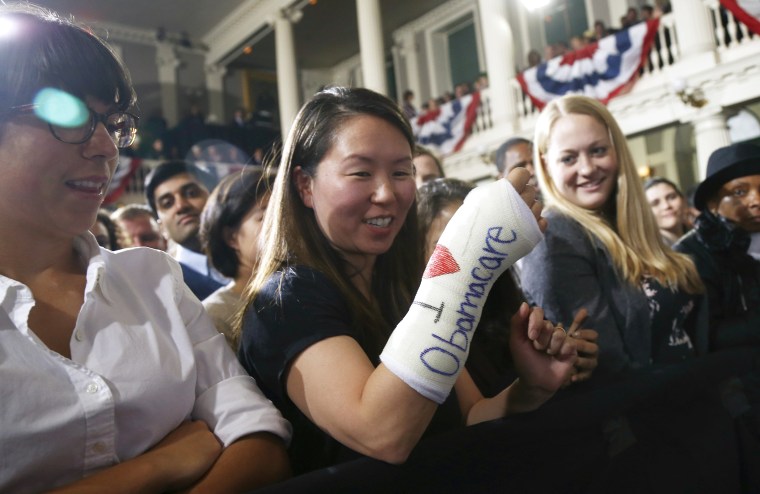Shopping for insurance on healthcare.gov isn’t yet as easy as booking a flight on Expedia, but a new survey suggests that consumers are warming up to the new online marketplace for health care. The findings, released Thursday by the Commonwealth Fund, show that insurance seekers had markedly better experiences in December than in October. Nearly 70% continued to give the health-care exchanges “fair” or “poor” ratings—a finding the Right may trumpet as a bitter defeat for Obamacare—but the finding is less dire as it sounds. Most potential enrollees said they still expected to buy insurance before open enrollment ends this spring, and young adults are showing as much interest as older ones.
Health care exchanges opened in all 50 states in October, but 36 of them relied on a federal enrollment website (healthcare.gov) that performed abysmally at first. The Obama administration repaired and improved the site during a frantic November push, enabling roughly a million people to enroll in private plans before the year ended. Another million secured private coverage through state-run exchanges, and nearly 4 million enrolled in Medicaid. The next goal is to push private enrollment from 2 million to 7 million by March 31, and to control costs by balancing older (costlier) subscribers with younger ones.
The new survey suggests that both goals are feasible. When Commonwealth polled potential enrollees in October, only 17% had visited the marketplaces through any medium (online, phone or paper). By mid-December, when the new survey was conducted, 24% had visited the marketplaces. Among the marketplace visitors questioned in December, 51% (versus 37% in the earlier survey) found it easy to compare the subscription fees (premiums) for different plans, and 43% (up from 30%) had no trouble comparing the benefits. Still, only 38% had an easy time comparing different plans’ out-of-pocket costs, and only 36% said it was easy to find a plan they could afford.
Despite these frustrations, nearly 40% of the marketplace visitors ended up applying for coverage by the end of December. And when the researchers questioned potential enrollees who hadn’t visited a health care exchange, or hadn’t applied for coverage, nearly 60% said they still planned to find a plan before the 2014 enrollment period ends in late March. “If that large a percentage of eligible consumers enroll in either Medicaid or the marketplace plans,” says Sara Collins, the Commonwealth Fund’s vice president for health care coverage and access, “that would make for a very successful first year of enrollment.”
Especially when you consider the age patterns the survey reveals. Now that insurers can’t penalize or exclude people who may actually require medical care, they depend heavily on young, healthy subscribers to help dilute the cost. Rates would skyrocket if the exchanges attracted only high-risk subscribers, but the new survey should help allay that fear. It found that 19- to 34-year-olds, who make up roughly 40% of potential enrollees, accounted for roughly 40% of marketplace visitors through December—and they were just as determined as older consumers to find coverage. Some 58% of the young adults who hadn’t yet enrolled said they would return before March 31. The figures were 61% among 35- to 49-year-olds and 55% among 50- to 64-year-olds.
Tapping all this potential will take effort. State and federal officials clearly need to keep improving the enrollment sites and—equally important—reaching out to inform and support potential enrollees. A third of them don’t even know the health care exchanges exist, and 44% haven’t heard that financial help is available. Not surprisingly, those in greatest need are the least aware of their options. The survey shows that only half of uninsured adults (versus three-quarters of those who already have individual policies) know about the marketplace subsidies. By the same token, low-income respondents are less informed than those with higher earnings. The health care law's "navigator" program is helping thousands of consumers get their bearings, but Texas and other red states are using onerous regulations to sabotage the effort.
Despite the obstacles, the Affordable Care Act is chugging forward. And if the new findings are any indication, it may yet succeed.
